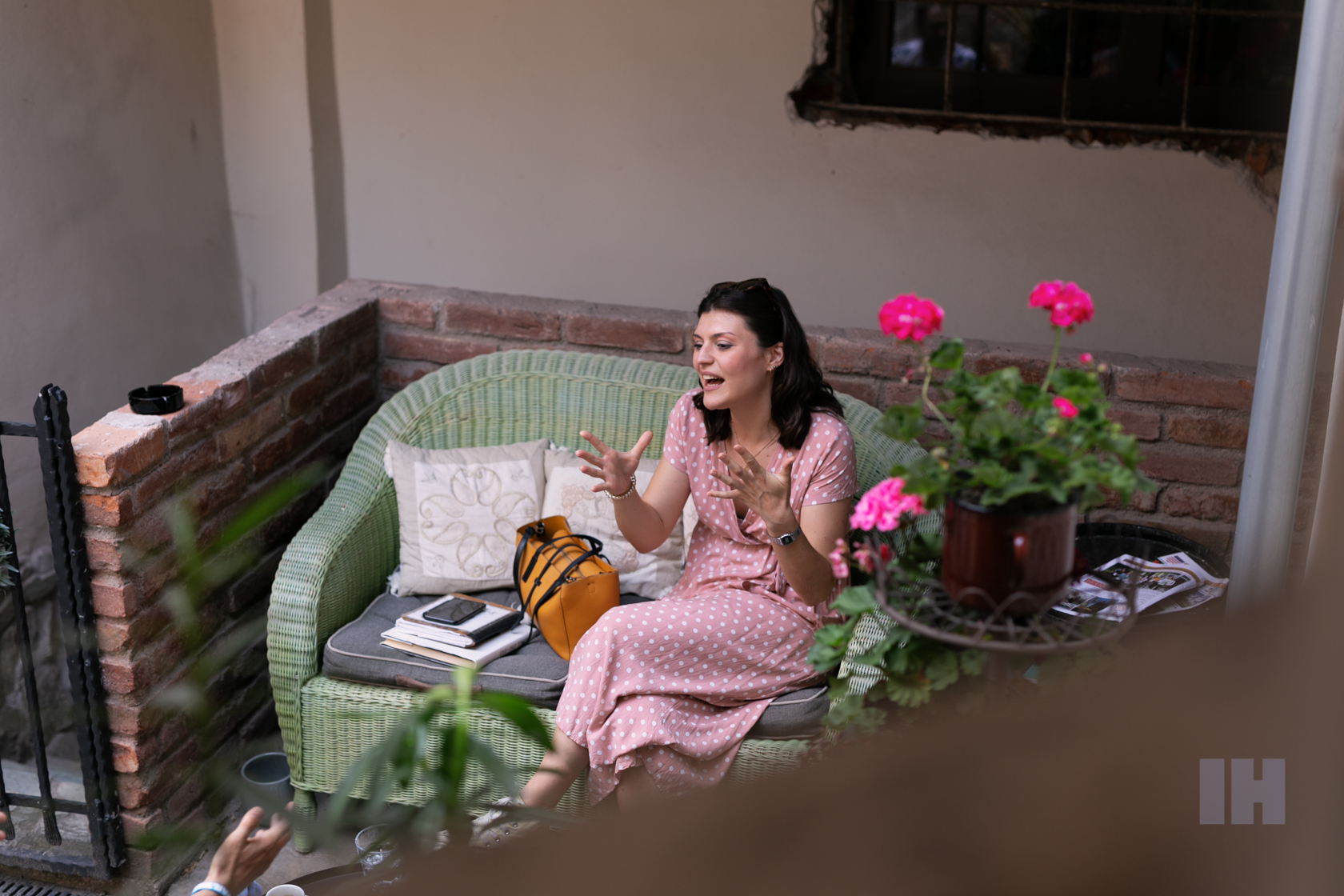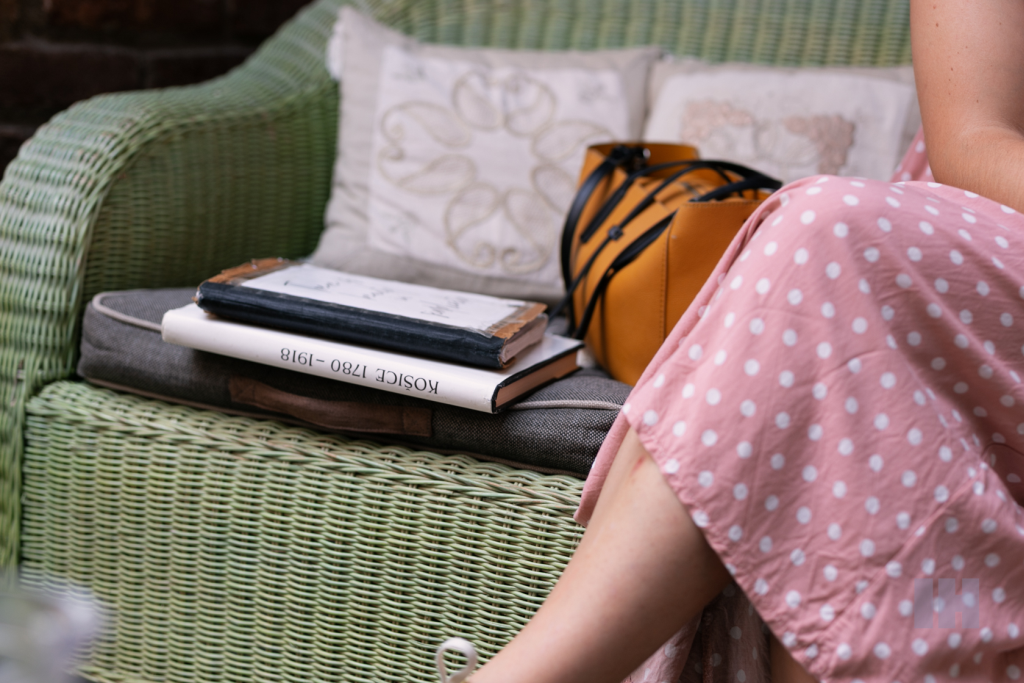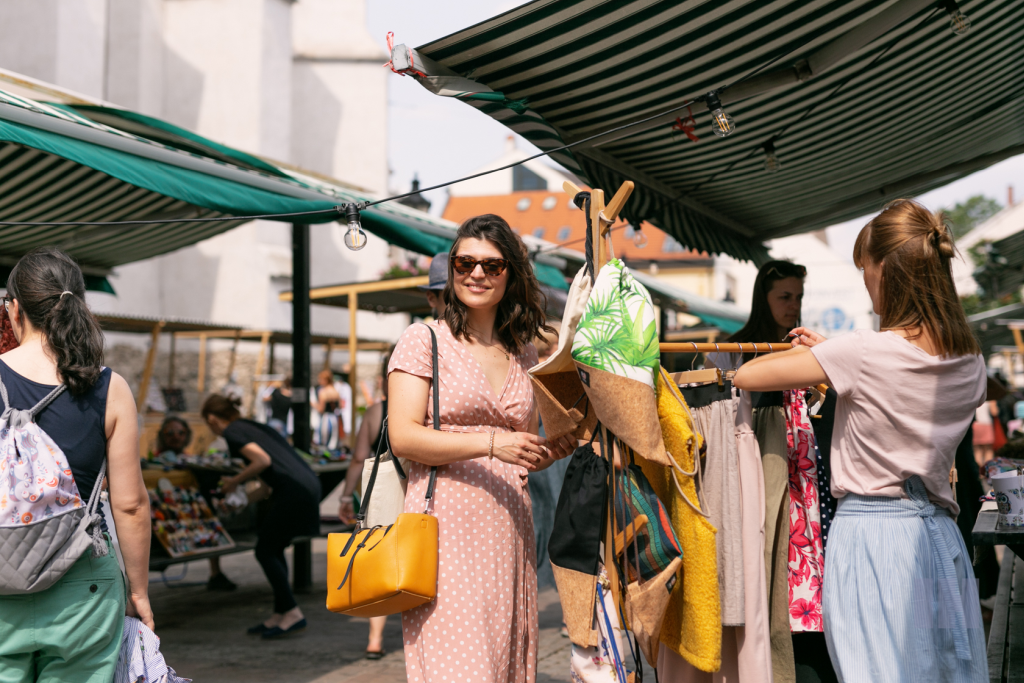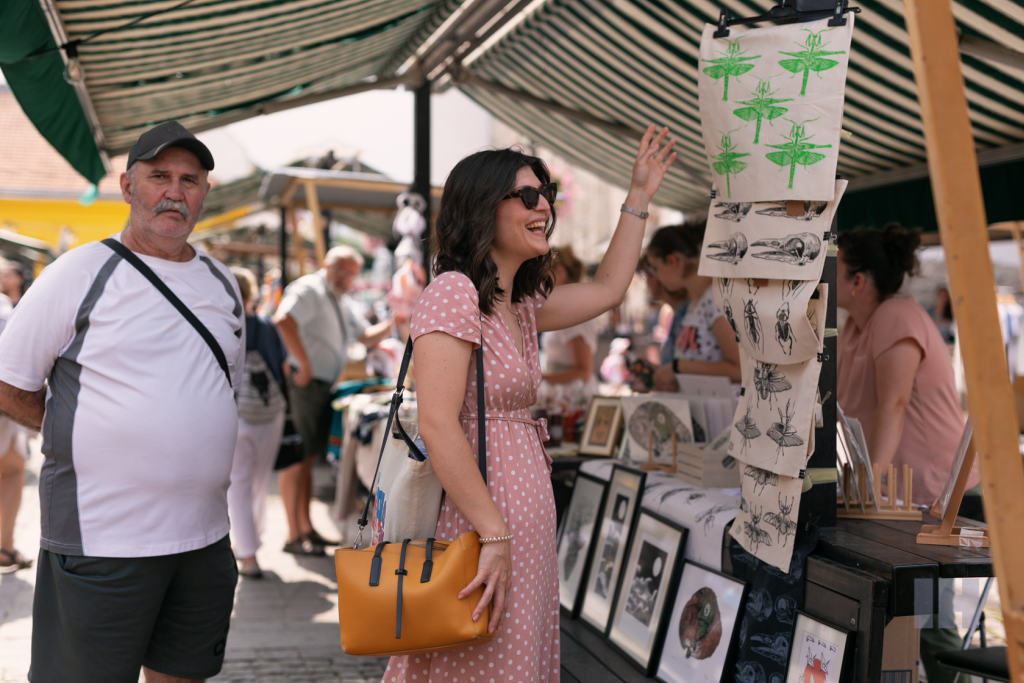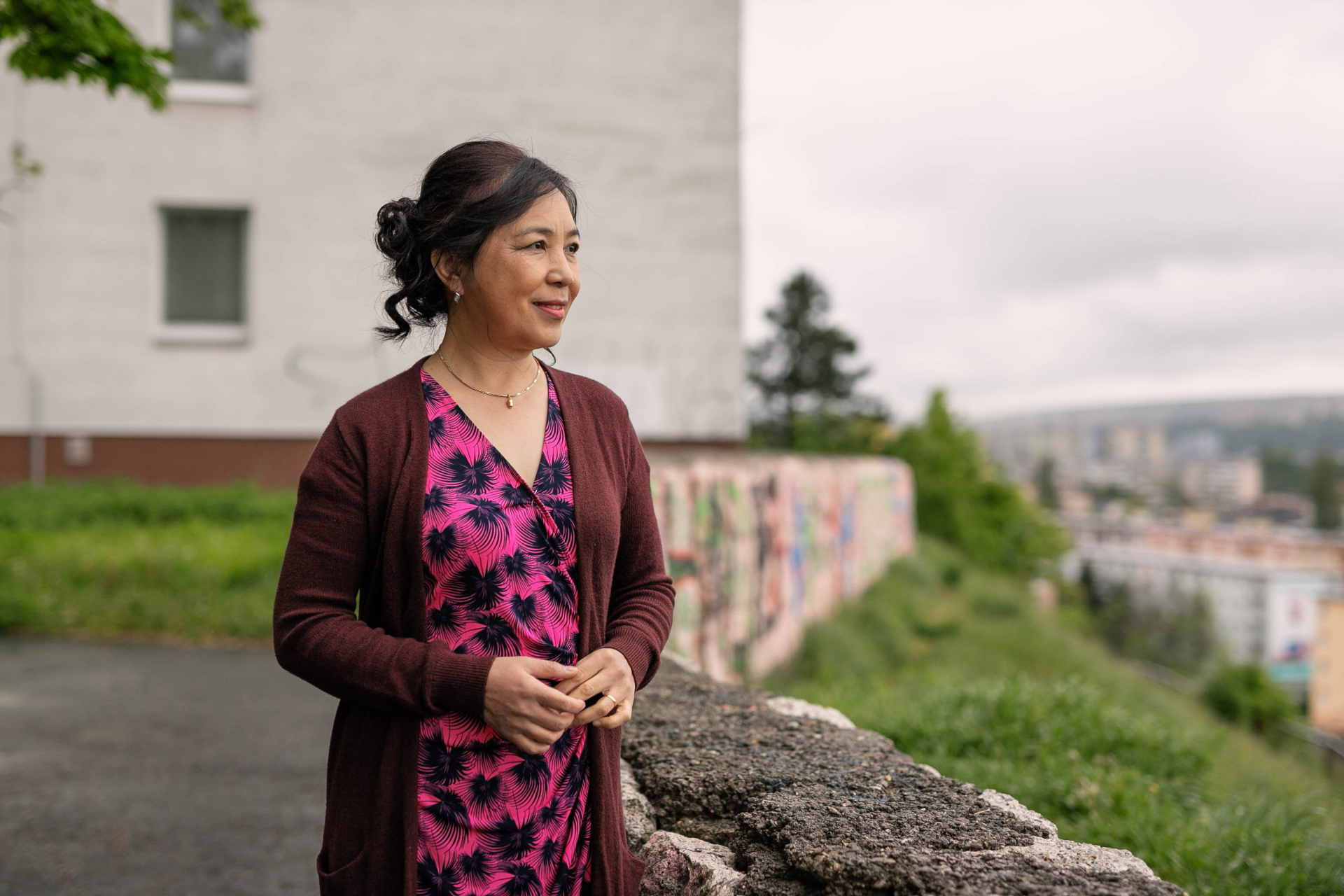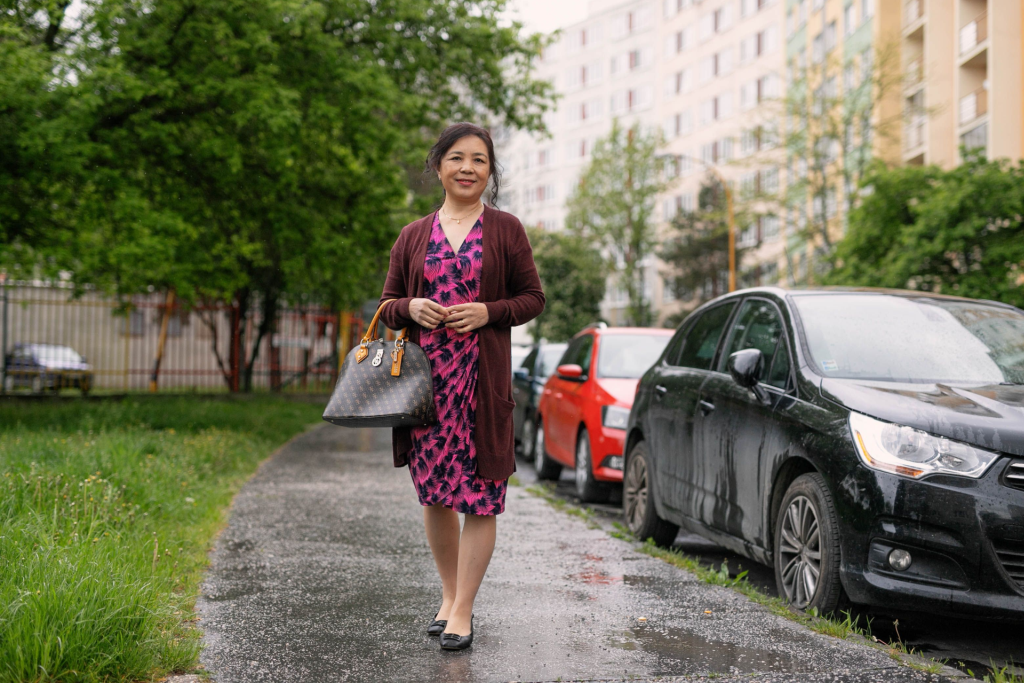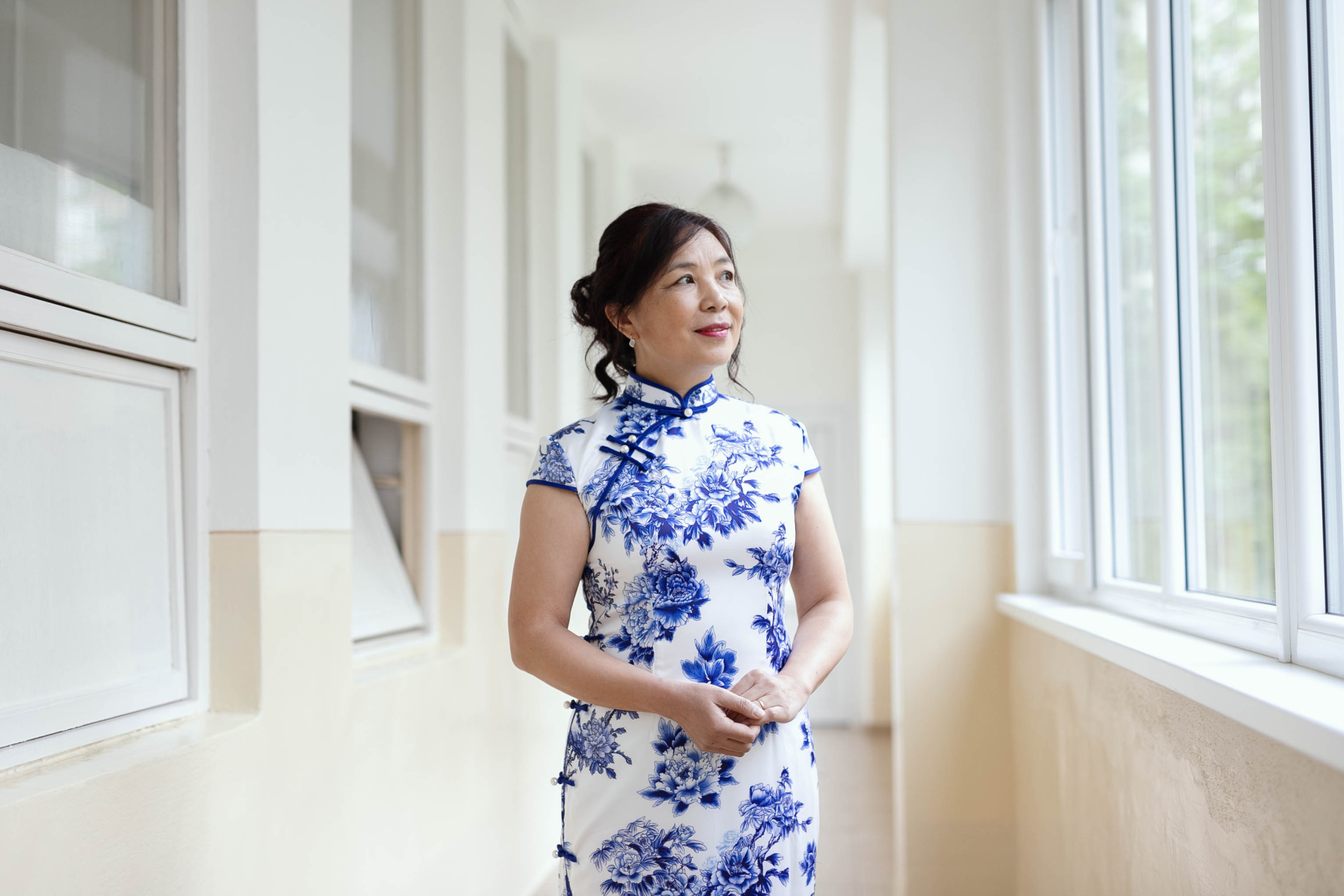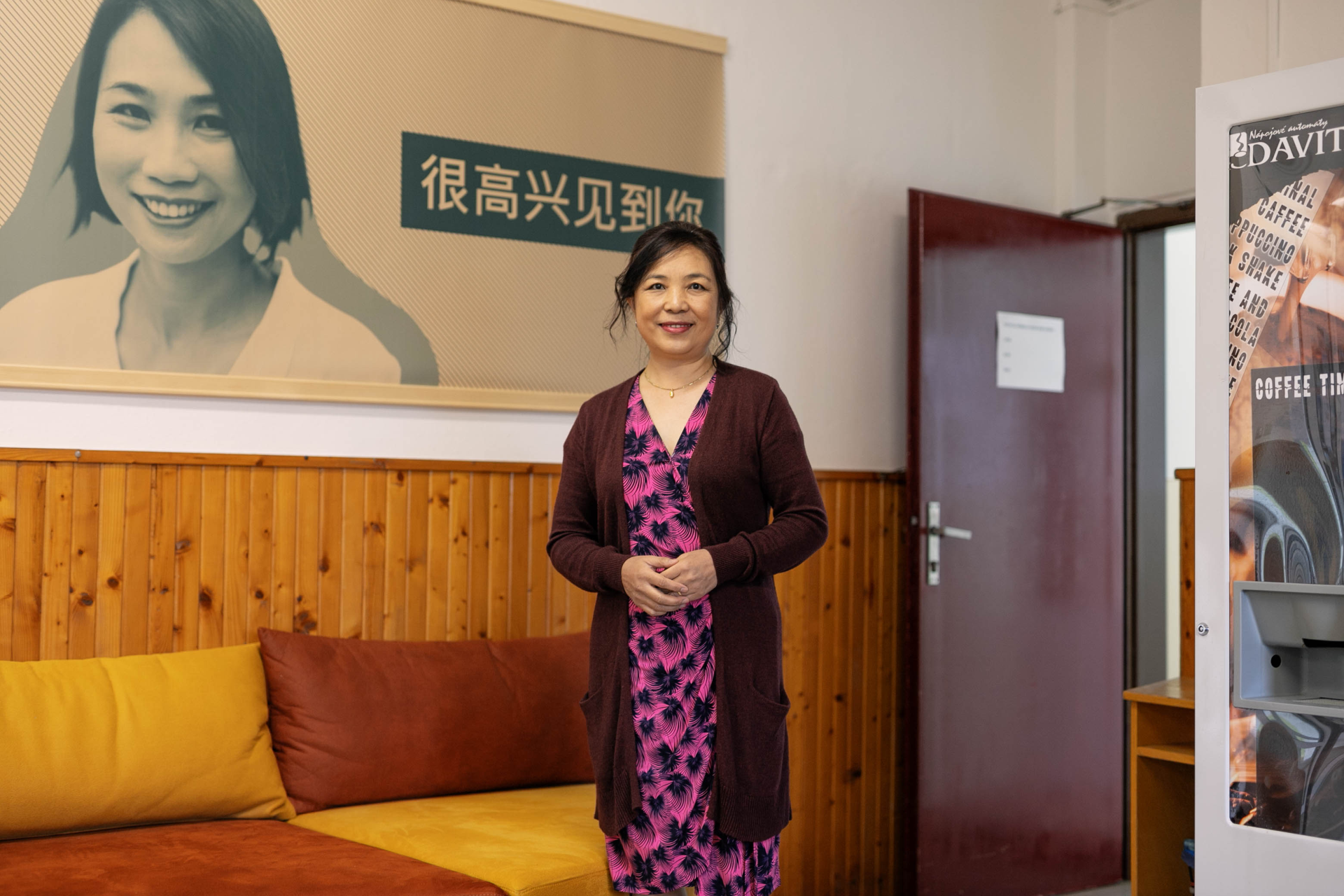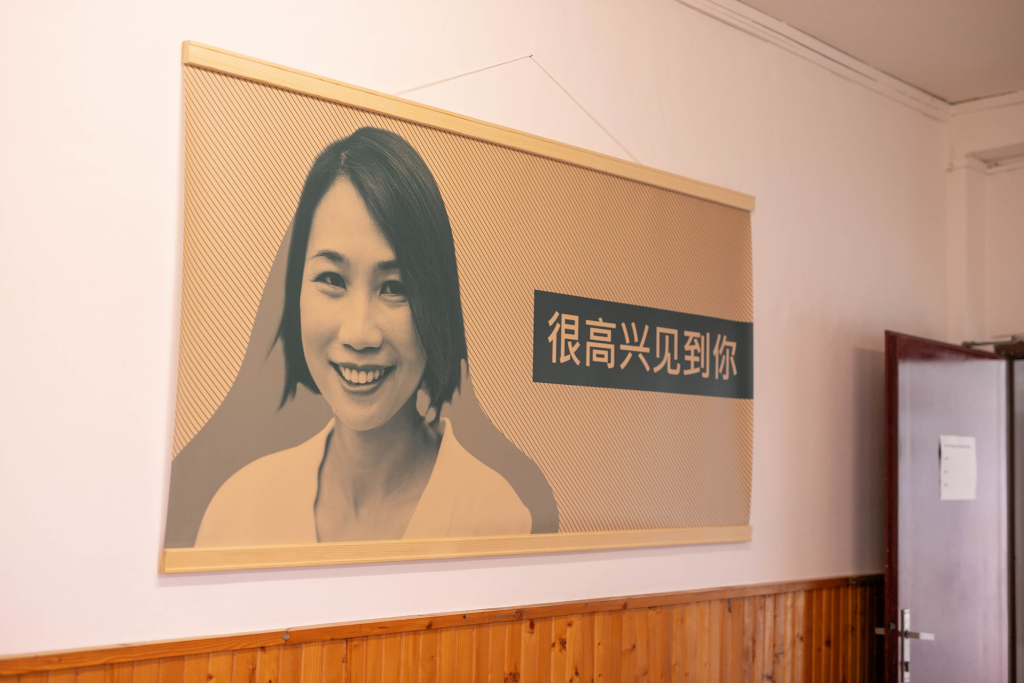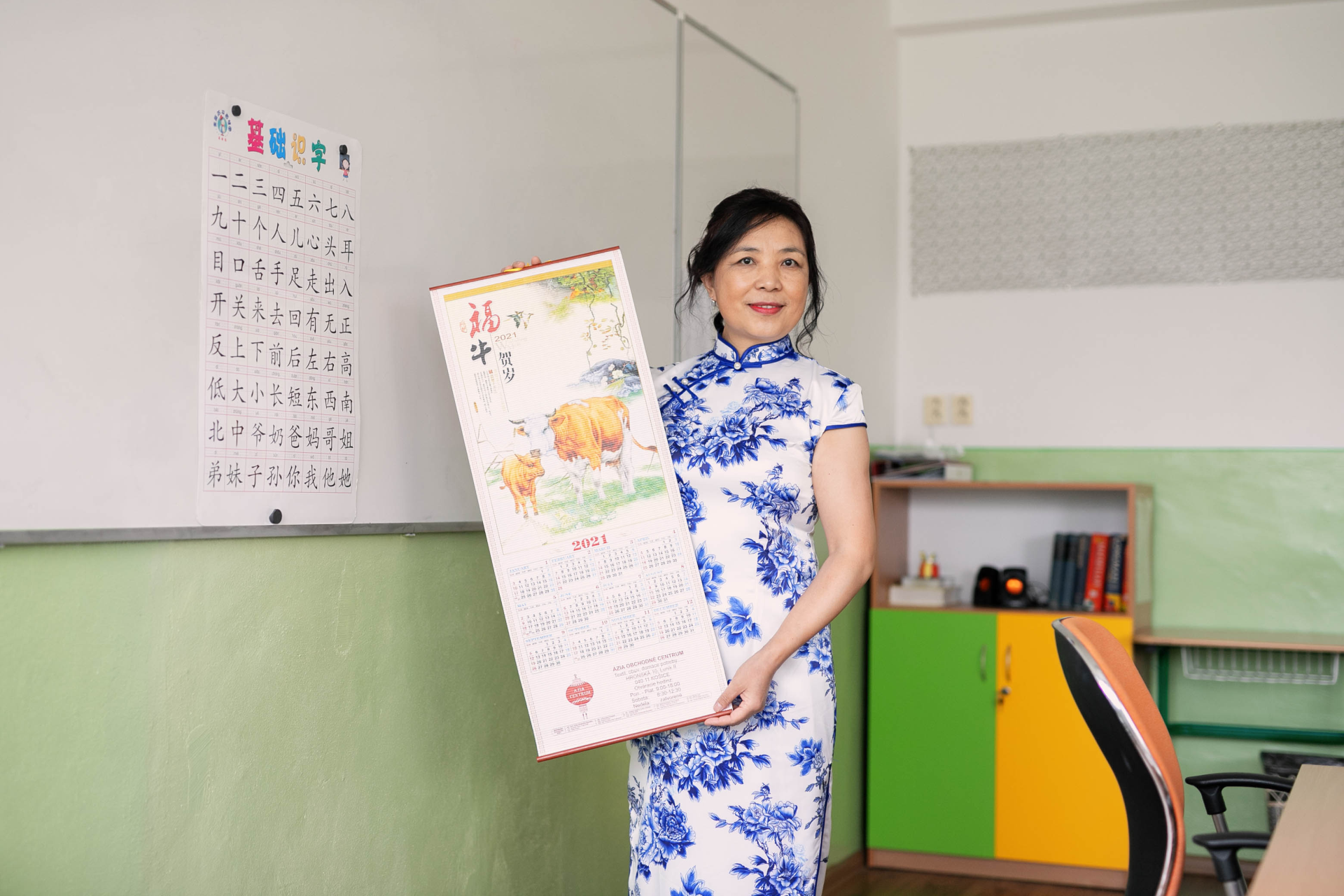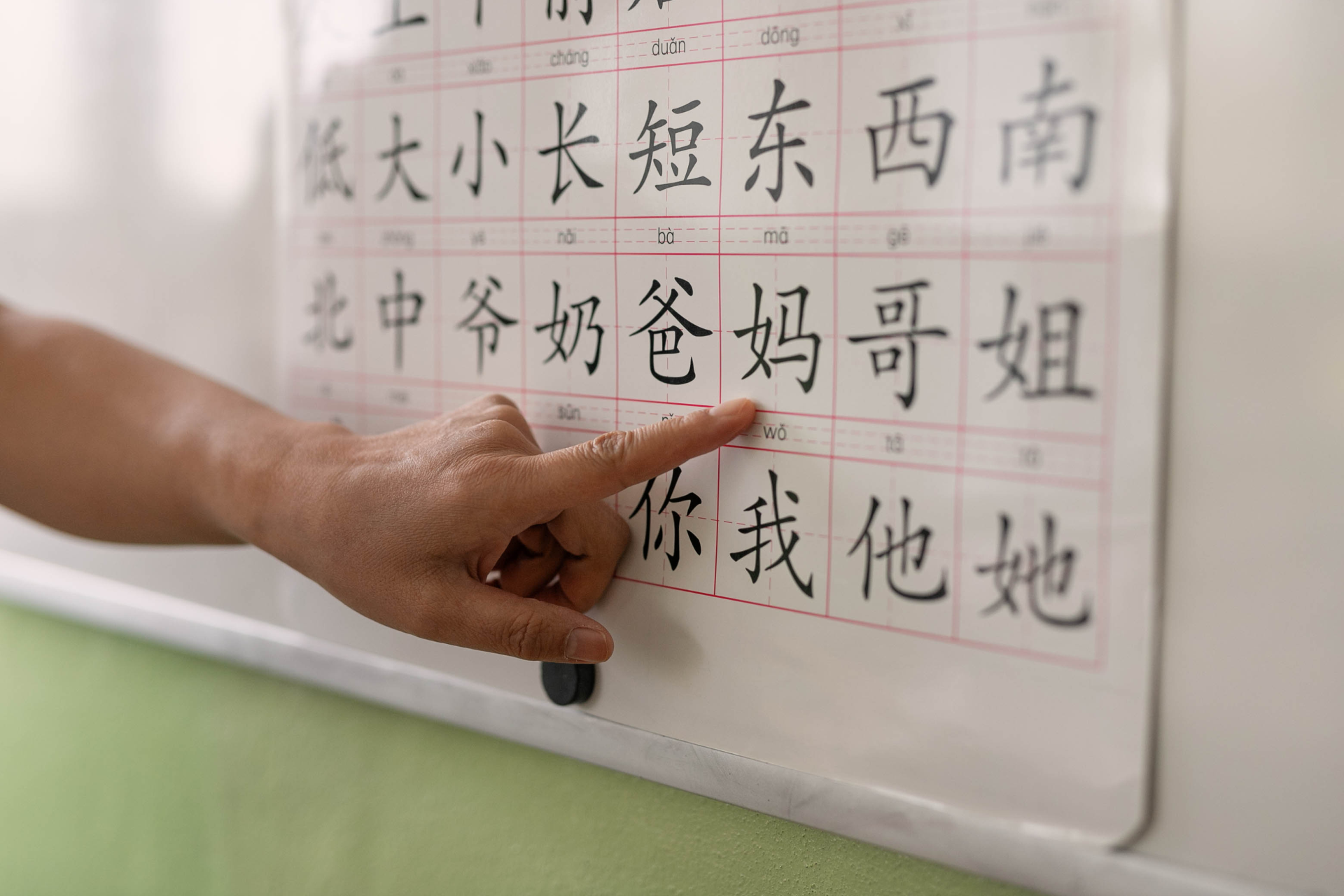Maria and Liu, two women who found diversity and inspiration, friends, and a feeling of safety in Košice. Foreigners in Košice – part 3
We close the series that tries to uncover the outlook of foreigners living in Košice on our city with the stories of two women from different cultures – Italian and Chinese. While Maria sees potential that inspires her at work in Košice, Liu has found here a life that would have never come true in her hometown. Read their story.
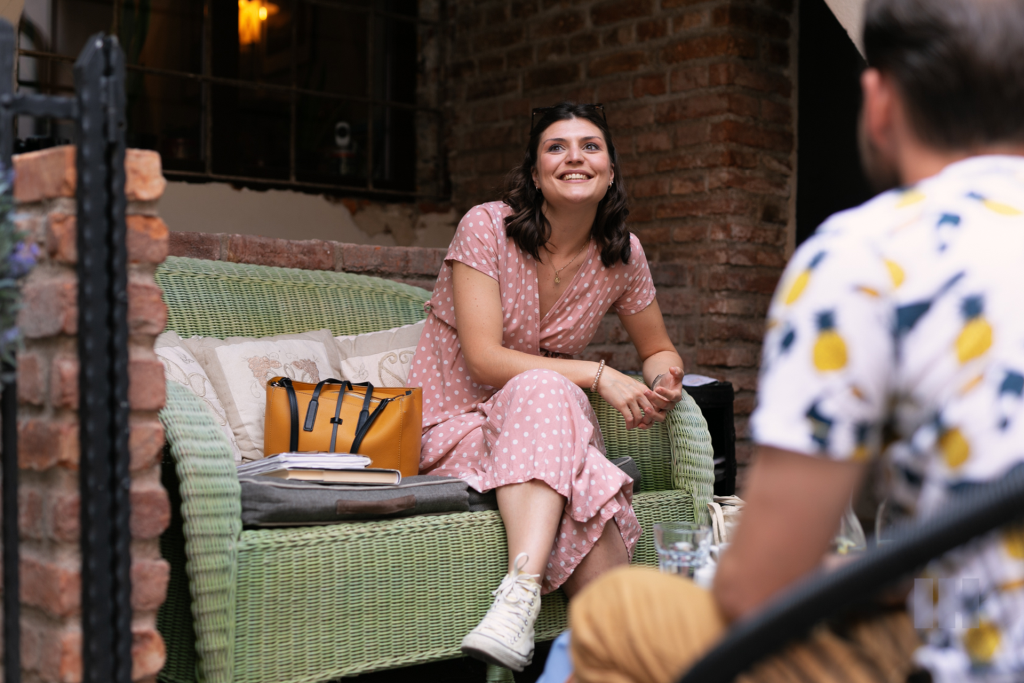
She wanted to know how life outside Italy works
It is a pleasant summer day. I am sitting in a Košice’s small cozy café called Malá Budapešť and am talking with Maria Gonzalo, who is another interesting foreigner living in Košice. She studied civil engineering and architecture. She is qualified in restoration and is very keen on history, which I can see throughout the interview. Maria comes from the southern region of Apulia, from the very famous pilgrim city San Giovanni Rotondo, where Páter Pio lived. „I spent there my whole life, but my mom is originally from Slovakia. My father is from Neapol, which means the top of temperament. My parents still live there; it’s only me who miraculously appeared in Slovakia. I wanted to know how things work outside of Italy. Come here and try to experience a different culture from where my mum comes.“
„In Italy, it is common for women to run a business. When I came here and started to work in my field, I didn’t have a good experience as a woman. It wasn’t easy to be a woman, an architect, and a young one in construction. I often met negative approaches like: ‚What was she going to boss us around? ‘Initially, I got an offer to restore the oldest building in Trnava. It was a good experience, but in the end, the cooperation discouraged me since there was none at all. I like working in a team, meeting new people, but it was more about individualism there. Everyone wanted to show me, he could do better than me. I went to Bratislava to work at an architectural company that worked on different projects. It sounded interesting, but there were around twenty people, and everyone sat at their office and worked at a computer. Again, no teamwork.“
„After this experience, I started to focus on a different profession. I can speak Slovak, so I wanted to use that I am bilingual. I sent applications to language schools. The first call I got was from Košice. It was from Society Dante Alighieri that focused on teaching the Italian language and culture. And that’s how I ended in Košice and became an Italian language teacher. Since then, I also started to teach Italian art, architecture, and history. It was a click, and I really enjoyed it. Gradually I have found out that the Eastern part of Slovakia, with its temperament, fits me better. My heart is telling me to stay here. People are closer to me thanks to their personalities. Košice appeals to me because they remind me of South, and you can feel the history in it.“
What is the first impression one gets from visiting Košice?
Have you ever thought about it? The first meeting with the city is important, and many times it determines whether we like it or not. We can even decide to stay and live in it. I know it myself as it is eleven years since I moved to Košice, and I still have that feeling. I want to live here, and I am proud that Košice can offer an excellent exploration experience to all sensible people. One comes in, and suddenly it hits him. At first, it’s the city park, then Jakab’s palace, Mlynská street, and finally the monumental gothic cathedral. The visual effect of the old city in Košice is impressive. Naturally, I am interested in how foreigners perceive it as they walk into the city for the first time.
„I remember that day. I arrived by train. I didn’t know anything about the city, but I had a great impression from the very beginning. The look at the gothic cathedral and the State Theatre was awe-inspiring. And my first feeling? How to explain it correctly. I was mathematically wondering what the size of the city is. In Italian, we call it ‚proporcione’. I thought of Bratislava as Milan and Košice as Rome. This is what it felt like when I saw the life around. It is full of history and sights. I perceived Bratislava to be more business-oriented, and Košice resembled the atmosphere of Rome with its monuments and mighty cathedral. As time passed, I noticed that the Christian history that formed our European cities is not very cherished here. You don’t invest in historical buildings, and I think there is no big focus on them. When I talk about Christianity, I have sacred art in churches on my mind. In Italy, people recognize it as an enormous fortune that attracts people from all over the world. It is a part of our tourism. Christianity left its mark in here and the message from the old times. Old prints and transformations that we have are present in our daily lives. They create the atmosphere and background of the city. But as I got to know Košice better, they started to become more alien.
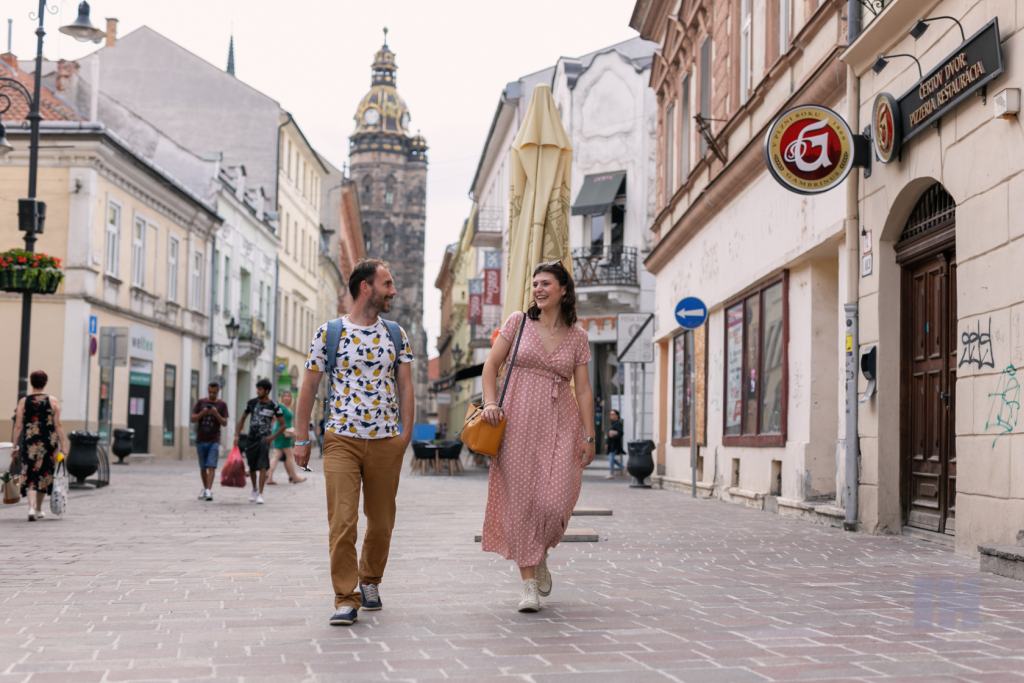
Alien Košice
At the sight of many old buildings, I started to think: ‚ Let’s uncover it more and find out what you have here.’ I discovered how radically the city was changed during the 19th century. Let’s mention the building of the State Theatre or many synagogues. I enjoy uncovering the hidden face of the city. Which Košice is the authentic one? Is it the Christian Middle Ages or the 19th century? It forces us to think and helps us not to lose our unique identity. I am pretty sensitive to these things. I do not want to preserve the old stuff at all costs, but every city can show us who we are. What we went through, what is our culture and identity. Despite the modernity of current times, the old historical cities shouldn’t be forgotten since they show us their people’s vitality, creativity, and entrepreneurial spirit. There is a tendency to put aside the historical part of the city and focus on the 19th century. For me, it leads to uniformity, and we suppress the old fortune, the precious history. In Italy, we know very well that culture, history, and sights make tourism, and that’s what Italy lives from. The same can happen to Košice as well. That is what I thought when talking about alien Košice.“
You can(not) make money out of beauty
When interviewing Maria, I feel like the old heritage, the value created throughout the centuries was still not known and valued by the public. There is a question popping in my mind: Do we represent our historical heritage sufficiently? Mary says that she often hears the opinion that you cannot make money out of the beauty of old buildings. But she thinks the opposite. „I have noticed that Košice is full of a significant number of old brick buildings. And that is a real treasure. Every time I see those bricks, my eyes get wide open. I live in an apartment that is inside a brick house myself. Brick is fantastic in hot weather and winter, but it feels like people don’t value it. When people start to reconstruct something, they demolish everything and put concrete there. When I see it, I want to cry.
I have already traveled around many parts of Slovakia and found an enormous number of crumbling castles and mansion houses. You have more than 800 castles, and I don’t know how many mansion houses in here. Most opinions are that it is not beneficial to invest in their reconstruction since they are of no use. On the other hand, if Italian investors came here, they could tell the potential hidden there. Slovakia is only learning how to sell itself through marketing. But I don’t see it only negatively. Many of the castles are being repaired, and active people are reconstructing them.“
I was wondering whether we have a place in Košice that would resemble her Italian homeland. „Mostly, it is Dominikanske square. It’s the atmosphere of a marketplace, many people. Also, the Dominican church of the Assumption of the Virgin Mary that is connected to the Basilica of Santa Maria Maggiore in Rome is very close to me.“ Besides this, Maria mentioned another exciting aspect. She remembers when her friends took her to the side streets of Košice and showed her our Calvinist church. „I was quite surprised. Suddenly I found out that you had Calvinists, Judes, and Hungarians here. I perceive it that even though Košice is a small city, its old inhabitants used to be open to different religions. I am fascinated by how the city absorbed it all. It is unique, and it’s not a matter of course. Košice showed me its multiculturalism. And I liked it.“
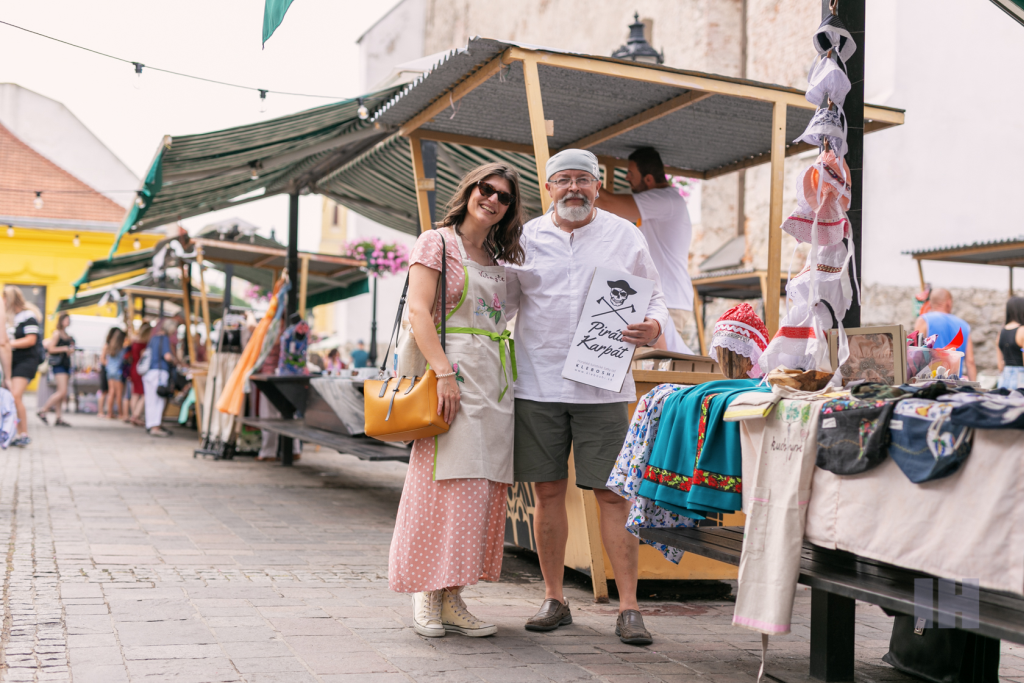
Slovaks don’t value enough their time to rest
Maria can’t deny her roots. She has a soul of an Italian, you can feel the southern temperament and love for Italian art, but she has also inherited part of Slovakia thanks to her mum’s side. That’s why I was interested if she sees any fundamental difference between these two cultures in everyday life since she belongs to both of them.
„I have come across the idea that Italians like coffee, cigarette, and to have their feet warm. But we work as well. In Italy, people better take 2-3 jobs during the week, but the weekend is sacred. That’s when they rest. And that’s where I see a big difference in the way of living. People could be more open to life and complain less. Slovaks will work until they die. They work all week and then on Saturday he finds another work to do at home. But work will wait sometimes. It will not run away. I have a feeling like Slovaks don’t value their time to rest enough. And that’s different with Italians. In Italy, people enjoy their free time more. They relax. Here I have an experience that people often complain about their work and are not satisfied because they care too much about what others think of them. I say, live your life and do not care what others think. Focus on yourself.“
When we arrived, everything was closed in Košice, – says Chinese language teacher Liu Dong
Slovakia and China are very distinct countries, not only by the distance but also by the people’s way of living, which comes from the different cultural-historical environments. There would definitely be many differences, but I am more interested in things that connect us. That’s why I got to meet Liu – a Chinese language teacher who lives in Košice. On Main Street, I met a cheerful woman who can speak nicely about our city, but she is also an inspiration for me in how to use our cultural background to the fullest. We went to a small café and ordered green tea, discovered 2000 years ago in China. The connection between our two countries started immediately, and I was pretty curious to hear her story. How does a person from China get to the Metropolis of Eastern Slovakia?
„My husband is a chemical engineer, and he worked for a Czechoslovak company in China that had built a factory for gas creation there. After the breakup of Czechoslovakia, he was contacted by the company to come and work for them in Košice. It was 1994. After some time, my husband started his own company with textile, and after two years, I arrived here to be with him.“ Do you remember how it felt to step in into a foreign city for the first time? What was the atmosphere in Košice like?
„We flew by plane from Prague, it was around 11pm, and I didn’t see any light. I thought there were hills all around. It was very silent. At the same time in China, many people were on the streets; it was crowded and busy. But not here. It was Easter, and shops were closed for several days. You couldn’t even buy potatoes for a salad. I wasn’t ready for something like that, and we stayed a bit hungry. Beginnings were hard; we couldn’t speak Slovak. We had a young son, and we signed him to attend a school. He got sick later on. We didn’t know how to arrange anything. It was a complicated time. To know the language would be beneficial back then, but I had never studied Slovak. Throughout the years, I have learned it myself. It is a complicated language.“
Reportages about Košice in the Chinese newspaper
After a few years, Liu got to know not only Košice but also a big part of Slovakia. She decided to write about this small country. She picked out many newspaper articles about Košice and Slovakia from her leather bag. Over 200 of her reportages have been issued. I looked at the Chinese letters in the newspaper, and the only thing I understood was photos of the Main street in Košice. I am surprised and very proud that Liu is making our city such good advertising. „Every week, I wrote one article about Košice. I attend Milan Kolcun’s Potulky, and so I have learned much interesting information about this city. Then I wrote them down for the Chinese newspaper. I wrote about Main street, Kulturpark, gothic cathedral, but also about small side streets. I also wrote a book about Slovakia and its sights. About Spiš castle, Levoča, Medzilabore, and many others. It was signed by former president Schuster and Milan Kolcun as well. I was even a host at his talk show Bez šepkára.“
My hometown Lanzhou wasn’t very cultural. It is better in Košice
„I like Košice very much; I know it well here and can orientate myself easily in the streets. When I go to Bratislava, I feel lost there. There are many busy streets which I don’t know. In Košice, I like to meet people. I like cultural events; every year, I attend at least fifty local exhibitions. I go to concerts, Philharmonie and I like old crafts and flok music presented in the city. Culture in Košice grew significantly after receiving the title of the European capital of culture. I can see the city move forward, and since then, I feel better living in Košice. There are more cultural events. Suppose I compare it with my hometown Lanzhou, built on the Yellow River and with its size of 4 million inhabitants far surpasses smaller Košice. In that case, this Slovak city is far more cultural. There is a wider variety and diversity. Back at home, there are many people, but not a lot of them know each other. It is a kind of individualistic living, with no remarkable contact with others. There are many restaurants, but many of them are identical. On the radio, you can only hear one music style from one singer over and over again, and only then a new song comes. City Lanzhou is more business-oriented. It is fast-living there. Košice is calmer.“
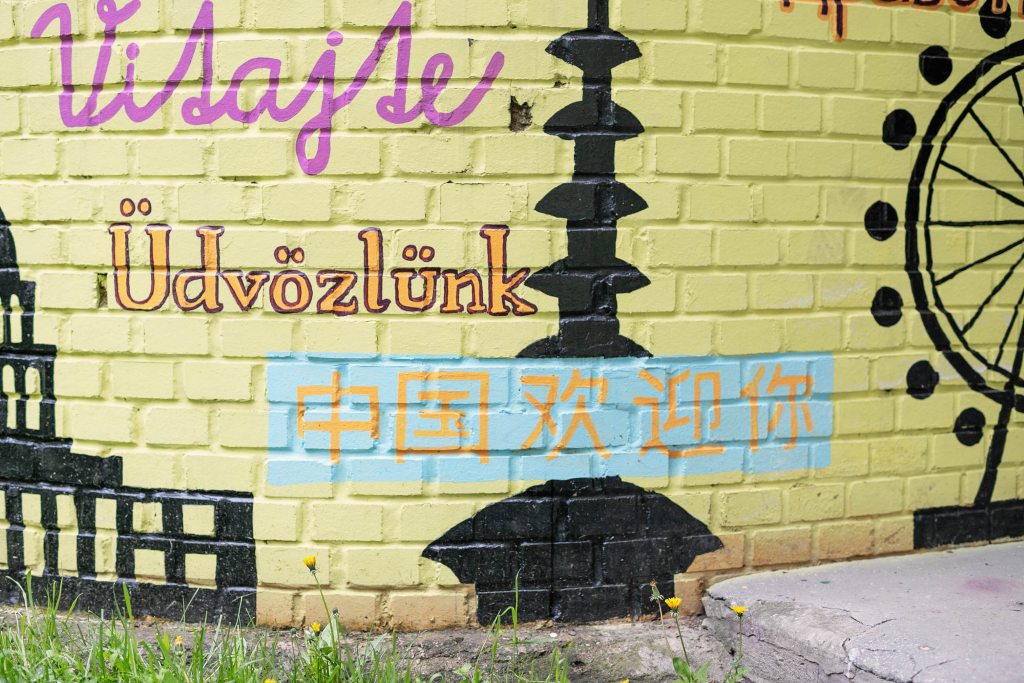
Her way of recognizing Košice’s culture was forming gradually. She has lived here for 26 years, but she didn’t go to the city center at all the first ten of them. She spent all her time at her husband’s textile shop and primarily with her family. As a mother, she also had to deal with many difficult situations connected to the school. „My son has come across many forms of discrimination in Slovak schools, and that’s why he decided to live abroad. He was submitted by two most distinguished American schools – Harvard and Cambridge in Los Angeles, where he finally decided to study. My husband and I are not going anywhere; we stay here because Košice is a good and safe place to live. This is our home.“
She got to know the Slovak culture through Lucia
There is only a small Chinese community in Košice, around ten families. „A Chinese person is usually on his own, with his family. We live like that in China. A garden is a place you spent time in; not many of us visit some cultural events of Philharmonie.“ I feel that Mrs. Liu is not a typical Chinese, since she is very interested in getting to know our city and broadening her horizons about the country she lives in. Her life had changed when she met her Slovak friend and colleague Lucia from the international language school Empire. Lucia was the one who helped her and took her to many cultural events in Košice. At first, they cheered for Košice’s Good Angels basketball team and only then visited other events. In this example, we can see how important it is to have a proactive approach towards foreigners. It is up to us to help integrate them into our society. How many foreigners do we know in our neighborhood? Have we ever shown them the city through our eyes?
„My goal is to break down the stereotypes. I want more Slovaks to get to know China through me. Not only thanks to the Chinese language I teach, but also to experience its live culture. That’s the reason I organize different events, Chinese New Year, as an example. Besides that, I write poems and recite them, and through them, I try to show people the richness of our Chinese culture,“ adds up at the end of the interview a charming teacher Liu Dong.
Our third part of Foreigners in Košice is finished with the article about two remarkable women. That’s why I dedicate it to all brave and active women who inspire us to be better people in life.

